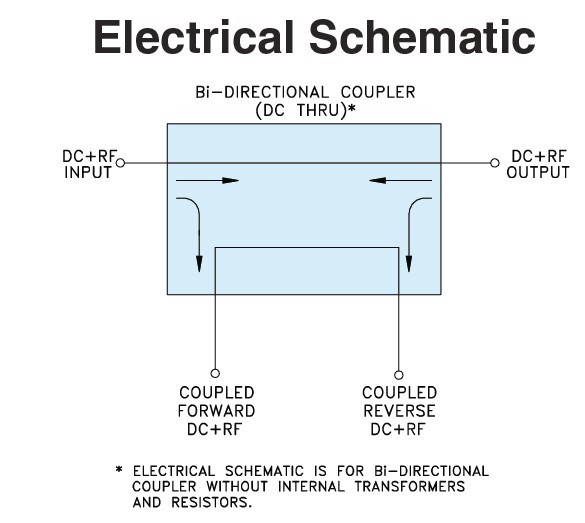Lets measure RL (return loss) using a bi-directional coupler. In this case we are using the BDCN-20-13+ from Mini-Circuits For this coupler key parameters are:
Coupling port power 20 dB, Directivity 12 dB. Main line loss between 370 Mhz and 470 Mhz is 0.25 dB max. Characteristic impedance is 50 Ohm
Ports are :
1 – the input port
4 – output port
6 – coupled port in the forward direction
3 – coupled port in the reverse direction
Now to further our analysis lets connect a load to port 1 and drive port 4. So this is a reverse direction operation for this coupler.
To use some numbers, lets input 0 dBm at port 4. Then since the loss on the mainline is 0.25 dB the power arriving at port 1 is -0.25 dBm. Also:
lets assume the load is exactly 50 Ohm and we terminate port 3 with also 50 Ohm. Now the power coming out of port 6 is -32 dBm if the coupler is ideal. (directivity + coupling ).
Now lets assume that the load is no longer 50 Ohm but 100 Ohm. Now there will be reflected power also being added to the power out of port 6. The difference between the
– 32 dBm and the total power being measured at port 6 with 100 Ohms is the reflected power PR.
Then the return loss is simply
RL=10log10(PT/PR) dB.
Here PT is 0 dBm. Once RL is known other parameters can be calculated.


